“Regular” kettlebells are the solid cast iron variety that you see the most of. They get bigger with increasing weight.
“Competition” style kettlebells have a steel exterior, not iron, and are a uniform size, with only the amount of weight inside of the hollow body changing. They aren’t just for competitors. They have a number of advantages for casual users that I’m going over in this guide.
Table of Contents
Outside Dimensions
This is the most obvious difference between the two.
Regular kettlebells are solid cast iron, either all one piece or the handle and body as two pieces welded together. The sizes and shapes of different brands vary widely.

There is no standard that manufacturers adhere to with the sizing of regular cast iron kettlebells. For heavier weights the handle will change in shape and thickness, and the body will get larger. These size differences lead you to change your movement or grip a little with each weight or brand.
Therefore, consistency in your workouts with regular kettlebells kind of goes out the window. Is your trouble with the heavier weight, or is it really something to do with the different handle?
Competition style kettlebells have a hollow steel body of a consistent outside dimensions regardless of weight. A couple methods are used to add weight to the body. Between brands there is only a little bit of variation in shape.

The consistency factor is one reason why competition kettlebells are superior. Once you get good form down, you can go up in weight and hold it exactly the same, rest it on your forearm the same, etc.
Regular kettlebells are cheaper. Most people at a typical gym aren’t going to really appreciate having the uniform size of competition kettlebells for perfectly consistent movements, the way someone serious about training with them across many exercises and weights would. Depends on who the gym serves. But that’s why a lot of gyms do fine with regular ones.
Handle Shape
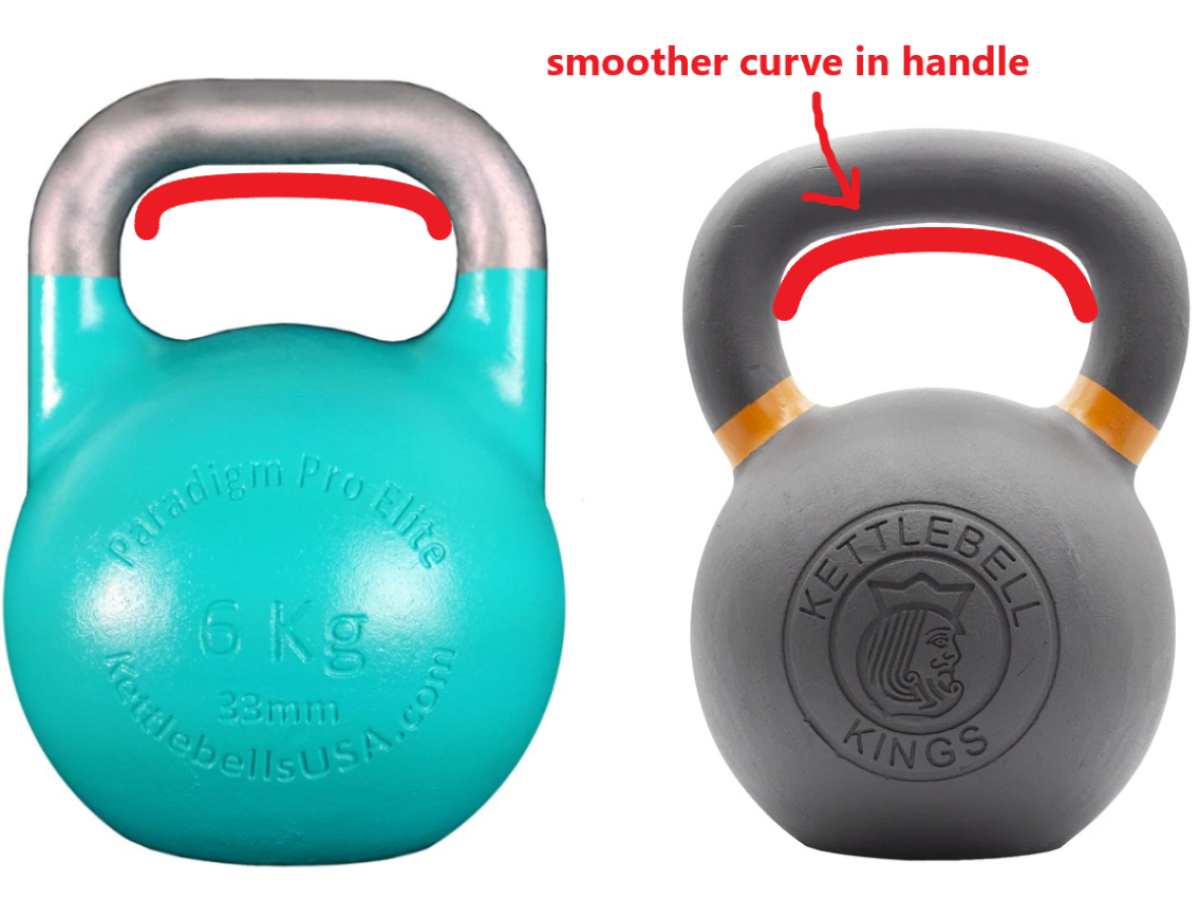
The handle on regular kettlebells, as usually has more of a rounded curve as shown. You can get both hands into it at the same time.
Competition kettlebells have a more angular handle that’s straighter on top and with a more abrupt curve towards the body. For all one-handed movements the straighter handle works out the best.
For two-handed swings, you might prefer either style of kettlebell, depending on the width of your hands. If you can get all fingers into the flat portion of a competition kettlebell handle, you most likely will prefer it. If your hands are bigger and your pinkies are left out before the abrupt curve in the handle, you will prefer a regular kettlebell with its gradual curve in the handle. A regular kettlebell also allows you to space your hands out a tad bit for a more natural grip.
Handle Texture
I have a few older (discontinued) regular cast iron Rage and Troy VTX kettlebells from when they were still making the handles too smooth. Not only are they too smooth, but also the handles have some imperfections in the casting, which only hurt your hands and don’t help your grip. Many around that time also had a line/seam on the bottom inside of the handle that any sane person had to smooth out with a steel file before using it.
Every manufacturer who knows what they’re doing has switched to a powder coated matte finish that has a much better feel, or more recently a cerakote finish is also done with success.
This kind of texture is ideal. Not too smooth and not too rough. A surface that’s too smooth sticks to your palms too much when dry, and then the kettlebell flies out of your hands as soon as you get sweaty. A surface that’s too rough will chew away at your skin like the knurling on a barbell. The handle has to be able to slide in your hands just the right amount. For this, a good powder coated matte finish is what everyone has settled on. It creates a nice even layer of soft bumps on the surface that minimizes friction against your hands.
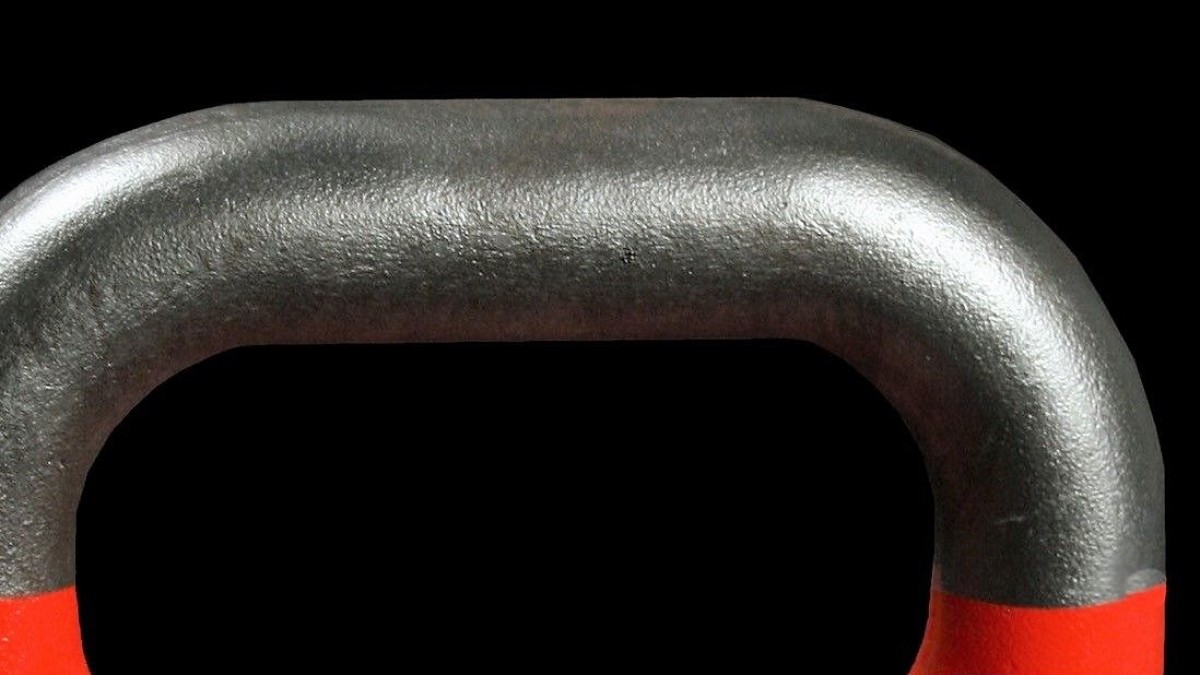
Competition kettlebells use a handle that is either bare steel or with some kind of thin finish.
Some brands have a polished steel handle. These are too slippery! Easy on the hands, but bad for grip. Stick with steel handles that retain texture.
A steel handle with texture also holds chalk well. Chalk creates more friction and should only be used when you need it, or you’ll just cause extra friction and tear up your hands. You’ll get a better idea when it’s helping by doing some experimentation.
Kettlebell Kings calls their texture “pitted” steel. That’s a weird word for it. Pitting usually refers to damage to steel from rusting. But the point is they aren’t too smooth, so that’s good.
As long as the kettlebell handle looks like it has a decent texture, or the online description indicates that it is not polished smooth, don’t get too hung up on this. With enough reps it’s going to cause callouses regardless. The important thing is it’s a decent feeling finish with no rough spots.
Handle Thickness
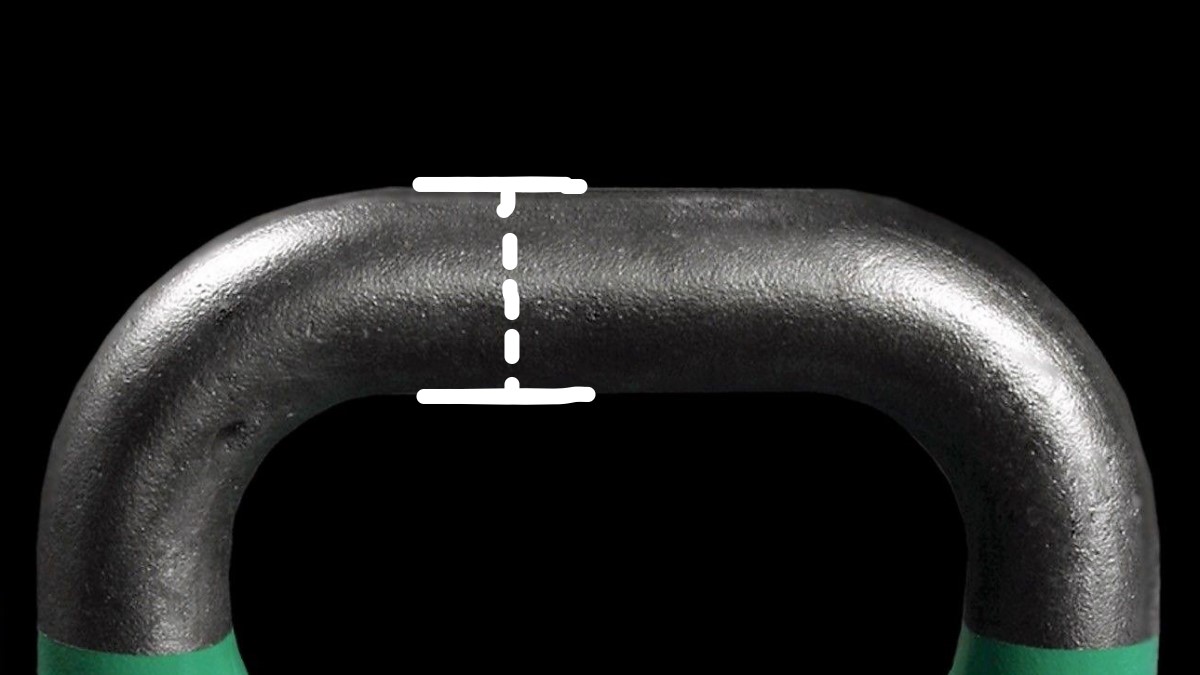
Handles on regular kettlebells graduate up in size for heavier weights, reaching 38mm / 1.5″ and higher. That’s too thick for most people. The point of kettlebell training isn’t to work your grip. The thicker the handle, the harder you have to hold onto it and the harder it rubs against your hands to cause damage as you try to let it slide in your hand without losing it.
The official size for competition kettlebell handles is 35mm / 1.38″. This isn’t bad.
Some manufacturers make a 33mm / 1.3″ handled version because it’s easier to hold onto. I highly recommend trying that size. For comparison, most barbells are around 28-30mm, some a little bigger. You aren’t lifting nearly as much weight as with a barbell, so a 28mm handle is not necessary or even desirable on a kettlebell.
Double Kettlebell Movements

Consistent form becomes even more meaningful with a kettlebell in each hand. Ideally, use competition kettlebells for this. The uniform size helps you maintain consistent form. You could bang them against your body if you aren’t used to the size and screw up a movement.
The only problem is competition kettlebells are bigger, or at least in the lighter weights, than the regular cast iron counterparts, making it necessary for you to take a wide stance to get them both between your legs.
Filler Material vs Hollow Core
Regular kettlebells are solid iron all the way down. Nothing tricky is going on inside to make weight. Each one is exactly as heavy it looks.
Competition kettlebells have a uniformly sized steel shell, and they need a way to vary the weight inside.
Often this is done by using some kind of cheap filler material to make weight. They fill it with something like ball bearings, packed in with sawdust or other light material to fill the space, then weld on the bottom. You might hear the filler move around, and of course that means the weight is shifting around on you. Not ideal.
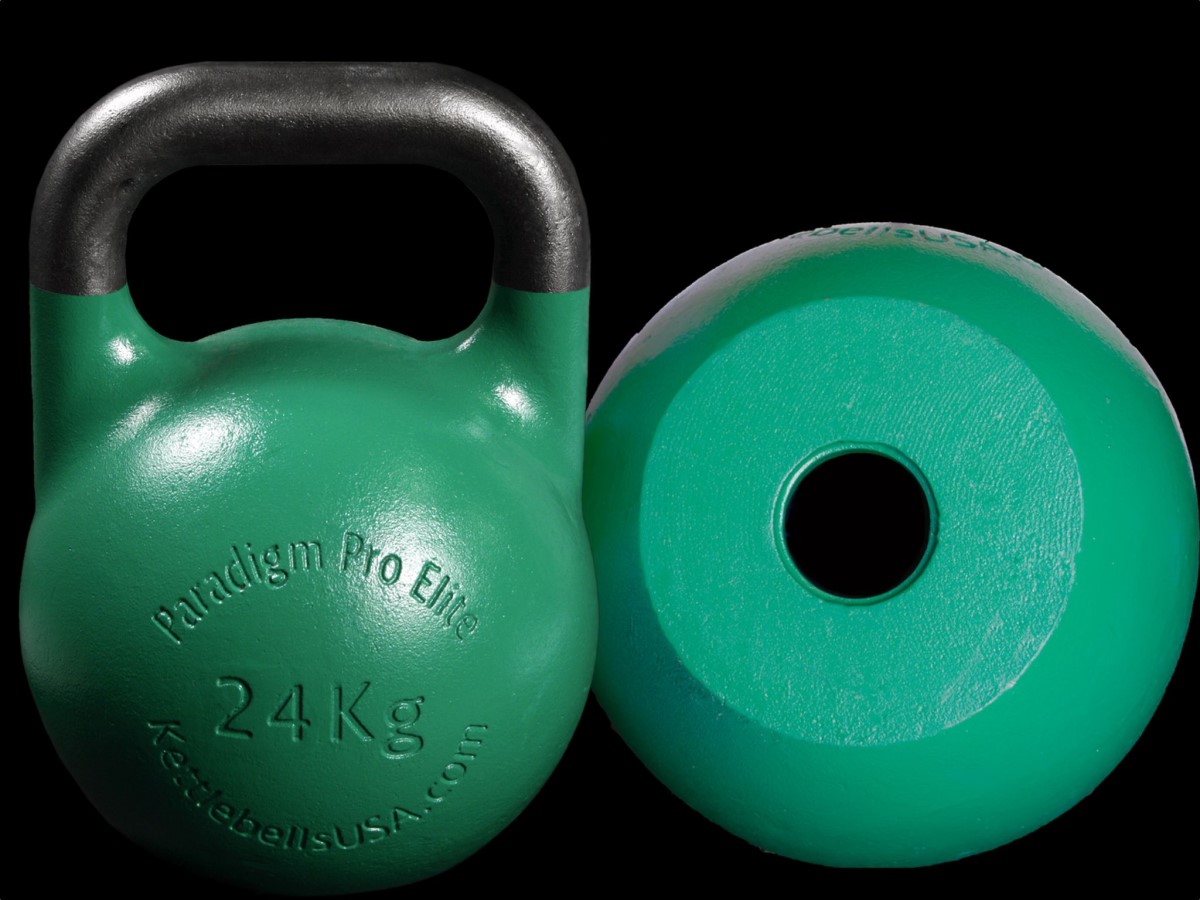
Kettlebells USA was the first to make competition kettlebells with a hollow core starting several years back. They flip the hollow bell upside down, pour the steel into the hole at the bottom, and leave the hole open as it is (no reason to close it up, I guess). The amount of steel they pour in determines the weight. This method results in more weight in the upper portion of the kettlebell, closer to the handle.
The effect for the user is a more balanced kettlebell that turns over your wrist easily. Experienced lifters prefer this design for the superior weight balancing and because it’s a totally solid feel where the weight can’t shift around on you.
The only other US manufacturer who does this, that I know of, is Kettlebell Kings.
You can identify this design by the hole in the bottom that they poured the steel into, which I think they have chosen to leave there as a good sign of their superior design. Without the hole, you’re probably looking at a kettlebell with some kind of filler material instead.
Both of those brands of hollow core kettlebells are expensive, like 50-60% more than other competition style kettlebells. Are they worth it to you? You might try some others before deciding that it’s a good use of your money.

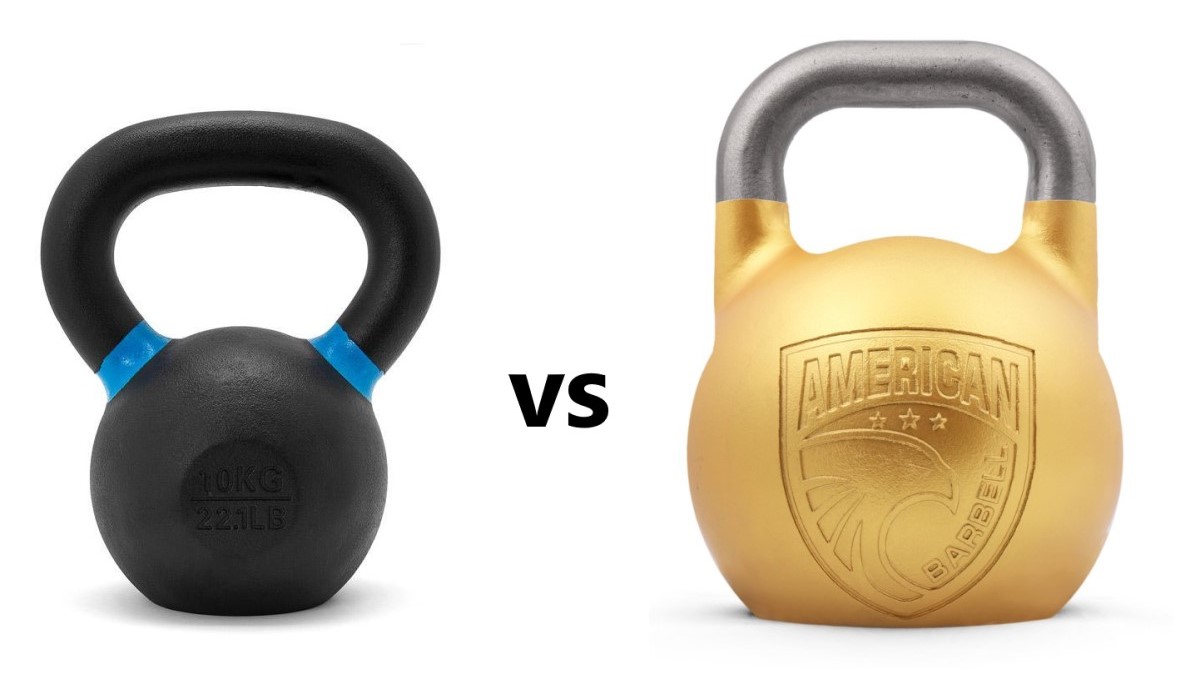
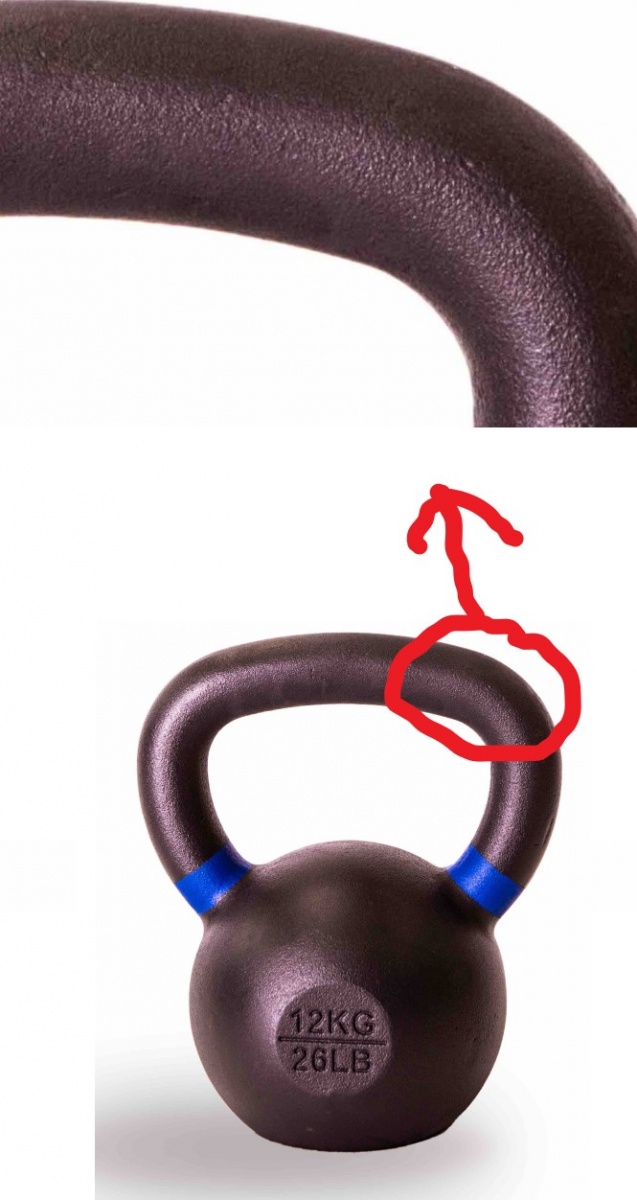
“The consistency factor is one reason why competition kettlebells are superior. Once you get good form down, you can go up in weight and hold it exactly the same, rest it on your forearm the same, etc.
This reason is why commercial environments often stick with regular kettlebells even if they can afford competition style ones, unless the clientele is really into progressing with other movements besides two-handed swings.”
I don’t understand your reasoning here. Why do commercial environments stick with regular kettle bells?
I didn’t word that very well. Regular kettlebells are cheaper. Most people at a typical gym aren’t going to really appreciate having the uniform size of competition kettlebells for perfectly consistent movements, the way someone serious about training with them across many exercises and weights would. Depends on who the gym serves. But that’s why a lot of gyms do fine with regular ones.